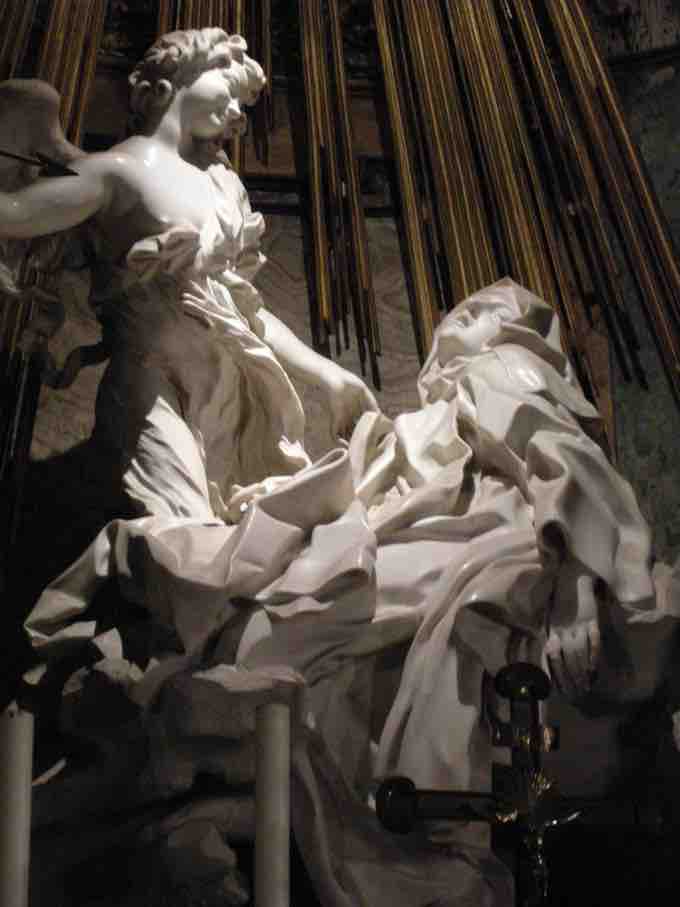Overview: Baroque Sculpture
Baroque sculpture is associated with the Baroque cultural movement in 17th century Europe. In Baroque sculpture, groups of figures assumed new importance, and there was a dynamic movement and energy of human forms—they spiraled around an empty central vortex or reached outwards into the surrounding space. Baroque sculpture often had multiple ideal viewing angles and reflected a general continuation of the Renaissance's move away from relief to sculpture created in the round. They were typically designed to be placed in the middle of a large space; for example, elaborate fountains such as Bernini's Fontana dei Quattro Fiumi (Rome, 1651) or those in the Gardens of Versailles were a Baroque specialty.
A great deal of Baroque sculpture added extra-sculptural elements; for example, concealed lighting, water fountains, or fused sculpture and architecture that created a transformative experience for the viewer. Artists saw themselves as working in the classical tradition and admired Hellenistic and later Roman sculpture.
The Work of Bernini
Gian Lorenzo Bernini was the dominating figure of the age. Bernini's sculptural output was immense and varied. The Ecstasy of St. Theresa in the Cornaro Chapel, Santa Maria della Vittoria, and the now-hidden Constantine at the base of the Scala Regia (which he designed) were among his best known works. Bernini was also given the commission for the Tomb of Pope Urban VIII in St Peters.

Ecstasy of St. Theresa by Bernini
Bernini was the most prominent sculptor of the Baroque period.
In 1665, at the height of his fame, Bernini traveled to Paris for several months in response to repeated requests for his works by King Louis XIV. His international popularity was such that the streets were lined with admiring crowds during his walks in the city. Here, Bernini presented some designs for the east front of the Louvre, which were ultimately rejected. He soon lost favor at the French court as he praised the art and architecture of Italy over that of France. The sole work remaining from his time in Paris is a bust of Louis XIV, which set the standard for royal portraiture for a century.